As a streaming business, your goal is to captivate your audience. And selecting the best aspect ratio is a crucial aspect of achieving this objective. From widescreen 16:9 to traditional 4:3 and even vertical formats, each aspect ratio has its own unique effect on how your content is perceived and experienced.
We will delve into the details of each aspect ratio, examining their applications and advantages in various streaming platforms. Furthermore, we will explore how aspect ratios contribute to maintaining visual consistency across different devices, ensuring that your content retains its intended impact, regardless of the viewing platform.
So, let’s get started!
Looking for an
enterprise video platform that can work well with multiple aspect ratios and video formats?
Click here to try Muvi Flex for FREE for 14 days!
What are Video Aspect Ratios?
Video aspect ratios refer to the proportional relationship between the width and height of a video frame. It represents the shape or format of the video display. Aspect ratios are expressed as a ratio of two numbers, typically separated by a colon. The first number represents the width of the video frame, while the second number represents the height.
To get the aspect ratio from a video resolution, you have to simply divide the width by the height. For instance, if the video resolution is 1920 px by 1080 px, then the aspect ratio will be 16:9.
Note that, for a single aspect ratio there can be multiple video resolutions.
I,e. for 16:9 aspect ratio, the possible resolutions are-
- 1600 x 900 (HD+)
- 1280 x 720 (HD)
- 3200 x 1800 (QHD+)
- 2560 x 1440 (QHD)
Etc.
Video Aspect Ratio: History, Overview, and Significance
Video aspect ratio is a fundamental aspect of visual storytelling, playing a crucial role in the composition and presentation of video content. Historically, aspect ratios have evolved alongside advancements in technology and changes in visual media.
In the early days of cinema, the standard aspect ratio was 4:3, known as the Academy ratio. This ratio was inherited from the aspect ratio of 35mm film stock and became the industry standard for both film and television.
However, with the rise of widescreen formats, such as CinemaScope, a new aspect ratio emerged – 2.35:1. This wider aspect ratio allowed for a more immersive cinematic experience and became popular in the film industry.
In the 1950s and 1960s, television sets started to adopt a wider aspect ratio of 16:9, known as the widescreen or HDTV (High-Definition Television) aspect ratio. This aspect ratio became the standard for high-definition content and is now widely used in modern displays and streaming platforms. Today, aspect ratios vary depending on the intended platform and purpose of the video content.
- The choice of aspect ratio has significant implications for video production. It affects the framing, composition, and overall visual aesthetics of the content.
- Different aspect ratios can evoke different emotions and convey distinct messages to the audience. For example, widescreen ratios like 16:9 are often used for immersive storytelling, while square ratios like 1:1 are ideal for showcasing products or capturing attention in social media feeds.
- In the context of streaming businesses, understanding aspect ratios is vital for optimizing the viewing experience across different devices and platforms. Ensuring that videos are displayed correctly and consistently enhances the visual quality and user engagement.
- Streaming platforms and video-on-demand services often have specific requirements and guidelines regarding aspect ratios to maintain a uniform experience for their viewers.

Some Common Video Aspect Ratios Types
Lets now take a quick look at some of the most commonly used video aspect ratios.
1. Standard Ratio (4:3)
The standard aspect ratio, also known as 4:3, was the traditional aspect ratio for television and computer monitors. It has a nearly square shape, with the width being four units and the height being three units.
This ratio was prevalent in older CRT televisions and earlier digital displays. It is still used in specific contexts, such as retro-themed videos or certain broadcasting formats.
2. Widescreen Ratio (16:9)
The widescreen aspect ratio, commonly referred to as 16:9, has become the standard for high-definition video content. It offers a more cinematic widescreen viewing experience compared to the standard ratio.
With a width of 16 units and a height of nine units, this aspect ratio is widely used in television, streaming platforms, online videos, and modern displays. It provides a visually immersive experience and is compatible with most devices and screens.
3. Ultra-Widescreen Ratio (21:9)
The ultra-widescreen aspect ratio, often denoted as 21:9, offers an even wider and more expansive viewing experience compared to the widescreen ratio. It is commonly used in cinematic presentations and gaming monitors.
With a width of 21 units and a height of nine units, this aspect ratio provides a panoramic view and enhances the cinematic feel of videos. However, it may require special formatting and is not universally supported by all platforms and devices.
4. Square Ratio (1:1)
The square aspect ratio, represented as 1:1, has equal width and height dimensions. This ratio is popularly used in social media platforms like Instagram. It is well-suited for mobile viewing and sharing and is often used to showcase products or capture attention in social media feeds.
The square format offers a balanced and symmetrical composition, allowing content creators to focus on central elements within the frame.
5. Aspect Ratio for Vertical Video (9:16)
The vertical aspect ratio, denoted as 9:16, is specifically designed for vertical or portrait-oriented videos. It is commonly used in platforms like TikTok and Snapchat, where users primarily view videos on mobile devices in a vertical orientation.
This ratio provides an optimized viewing experience for mobile users, allowing content to occupy the entire screen in portrait mode.
6. Custom Ratio
While standard aspect ratios are widely used, there are instances where custom aspect ratios are necessary. Custom ratios can be tailored to specific project requirements, accommodating unique screen dimensions or creative choices.
Content creators can define the desired width and height dimensions to create a custom aspect ratio that suits their vision.
7. Full Frame Ratio
The full frame ratio refers to a 3:2 aspect ratio commonly found in photography. It is based on the dimensions of standard 35mm film frames. This aspect ratio is often used in slideshows, presentations, or videos that aim to emulate the look and feel of traditional film photography.
8. Panoramic Ratio
Panoramic aspect ratios, such as 2.35:1 or 2.39:1, are commonly used in film production to create a wide, cinematic view. These ratios provide an expansive visual experience, emphasizing sweeping landscapes or grandiose compositions.
Panoramic ratios are often associated with epic movies or high-budget productions, capturing the viewer’s attention and creating a sense of awe and immersion.
8. CinemaScope Ratio
CinemaScope aspect ratio, specifically 2.35:1 or 2.39:1, is a widescreen format that was popularized in the 1950s. It was developed to provide a wider cinematic experience compared to the standard 4:3 aspect ratio.
CinemaScope offers an immersive viewing experience, with a wide horizontal span that fills the audience’s field of vision. This ratio became synonymous with epic films and is still used in modern cinema to create a sense of grandeur and spectacle.
The significance of different aspect ratios lies in their ability to convey specific visual experiences and evoke different emotions. The choice of aspect ratio depends on various factors, including the intended platform, target audience, and the creative vision of the content.
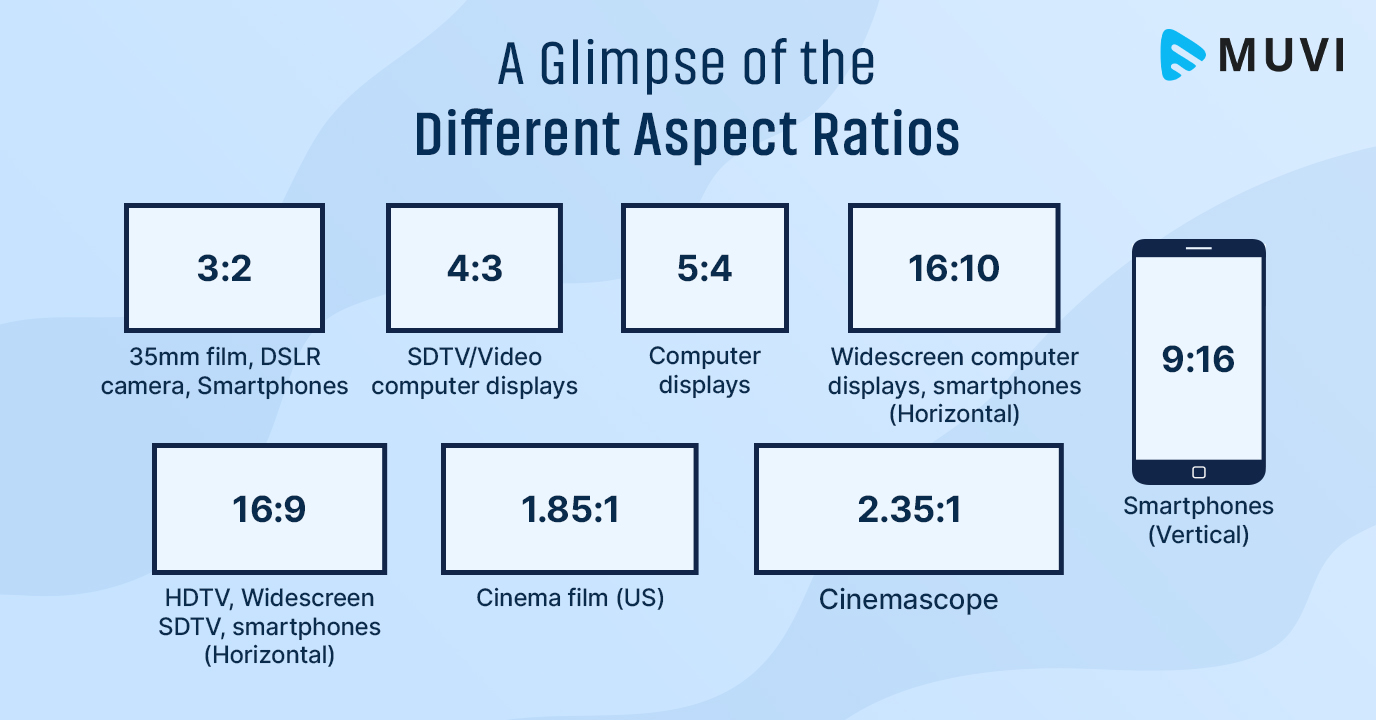
Best Aspect Ratios for Video Streaming/OTT platforms
When it comes to video streaming and Over-The-Top (OTT) platforms, choosing the right video aspect ratio is crucial for delivering a seamless and immersive viewing experience. Let’s explore some of the best video aspect ratios for video streaming and OTT platforms.
1. Widescreen (16:9)
It offers a cinematic viewing experience and is compatible with modern high-definition displays. This aspect ratio is widely supported across different devices and platforms, making it an ideal choice for delivering content to a broad audience.
2. Square (1:1)
The square aspect ratio, with equal width and height dimensions, has gained popularity with the rise of social media platforms like Instagram.
3. Custom Aspect Ratios
In some cases, custom aspect ratios may be required based on specific platform requirements or creative considerations. OTT platforms often have their own guidelines for aspect ratios, and content creators may need to adapt to these requirements.
Best Aspect Ratio for Social Media Videos
Aspect Ratio would vary greatly depending on which social media platform you choose. Popular aspect ratios for some common social media platforms are as follows:
- Facebook: If you are posting videos on feed, you should go with 1:1 or 4:5 aspect ratio. But for stories, you can go with a 9:16 aspect ratio.
- Instagram: It will depend on the type of content you are posting on Instagram. For example, if you post stories, 9:16 will be the perfect aspect ratio for you. But for feed videos and carousels, a 4:5 aspect ratio would look better. Similarly for IGTV, you should go for 9:16 ratio.
- TikTok: For TikTok videos, you can definitely go with a 9:16 aspect ratio. The reason behind this choice is that this aspect ratio fills up most of your viewer’s screen. Also, the minimum resolution needed for a TikTok video is 1080 pixels by 1920 pixels, and the 9:16 aspect ratio satisfies this requirement perfectly.
- YouTube: For YouTube, you should go with the 16:9 aspect ratio, as it goes well with the widescreen orientation that YouTube usually follows. But for YouTube Shorts, you can use a 9:16 aspect ratio.
- Snapchat: Snapchat videos are often viewed as fullscreen videos so you should use the 9:16 aspect ratio for them.
- LinkedIn: Aspect ratio for LinkedIn will depend on the type and purpose of your videos. For example, the 1:1 aspect ratio works well for in-feed videos, while for video-only feeds, you can use a 9:16 aspect ratio.
- Twitter: Usually, videos with 16:9 aspect ratio look best on Twitter. But you can use 1:1 and 4:5 aspect ratio also, based on your purpose of use.
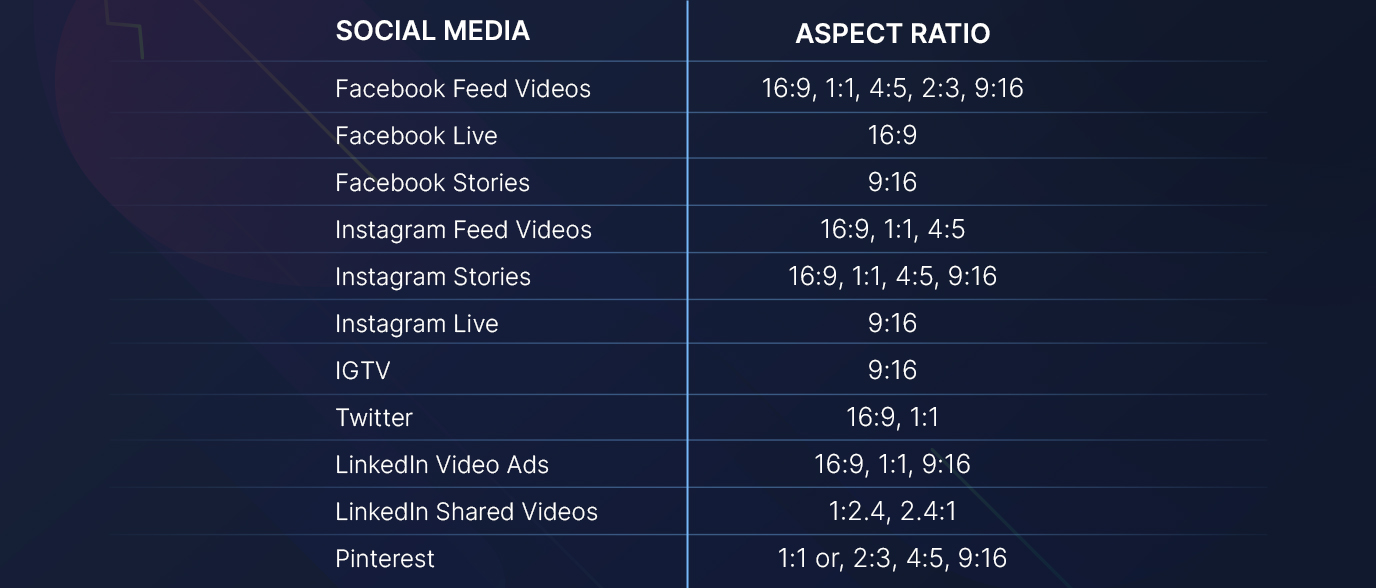
How to Choose the Best Aspect Ratio for Your Videos
The aspect ratio has a major role in determining the mood, composition, and overall impact of your video content on the audience. A few tips for choosing your aspect ratio-
- Always choose the aspect ratio before shooting your content.
- Opt for the aspect ratio based on the media your content will be played on. For instance, the standard aspect ratio for YouTube on a computer is 16:9, also for live streaming this is usually the best aspect ratio.
- Plan beforehand which platforms your video content will be shared on and make a list of the best respective aspect ratios so that your videos don’t turn out to be cropped or with black bars at the top or bottom on the main platforms.
- 16:9 works for almost all platforms, and devices, has high quality, and is easy to capture. However, it is recommended to have a clear knowledge of other aspect ratios as well.
Can You Change The Video Aspect Ratio? How?
In most cases, the aspect ratio of a video is determined during recording or editing and cannot be easily changed. Altering the aspect ratio can lead to distorted visuals or cropping. However, certain video editing software or platforms may offer limited options to resize or adjust aspect ratios.
Here are some of those video editing software:
- Clipchamp
- Premiere Pro
- Movavi Video Converter
- Animaker
- Chopcast
- Videoleap
You will find all of these platforms on Google, and many of them work online. You just need to upload your video and choose your preferred aspect ratio. Rest of the work will be doen by these platforms.
Wrapping Up
Understanding video aspect ratios is one of the basics to nail before you make your video content and stream those over various platforms. And you should choose one based on the type of videos, audience, as well as which platforms it can be shared on later, you should opt for a video aspect ratio.
Even for that, there are different aspect ratios that work the best for different social media, documents like digital flipbooks, and so on. Having a clear idea of video aspect ratio will help you in the long run, especially if you are operating in the streaming industry.
And if you are looking for a good enterprise video platform that supports multiple aspect ratios and video formats, Muvi Flex is one such platform for you. Muvi Flex is an enterprise-grade cloud video hosting and management platform, that lets you host, store, manage, share, and distribute all your video assets from a single dashboard.
Muvi Flex comes with exclusive features like multi-DRM security, built-in encoding and transcoding, multi-format support, HLS output, and MRSS feeds, to name a few. You can take a 14-day free trial to get first-hand experience.
Click here to get started.














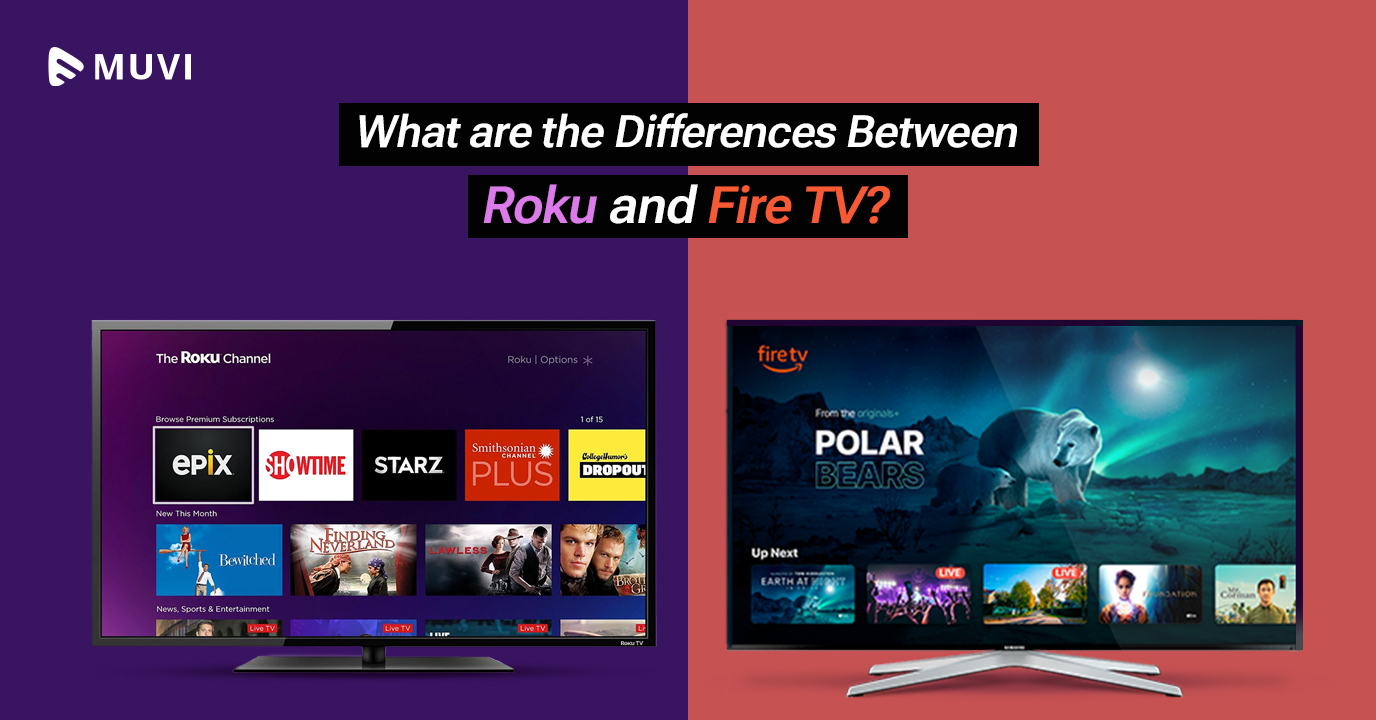
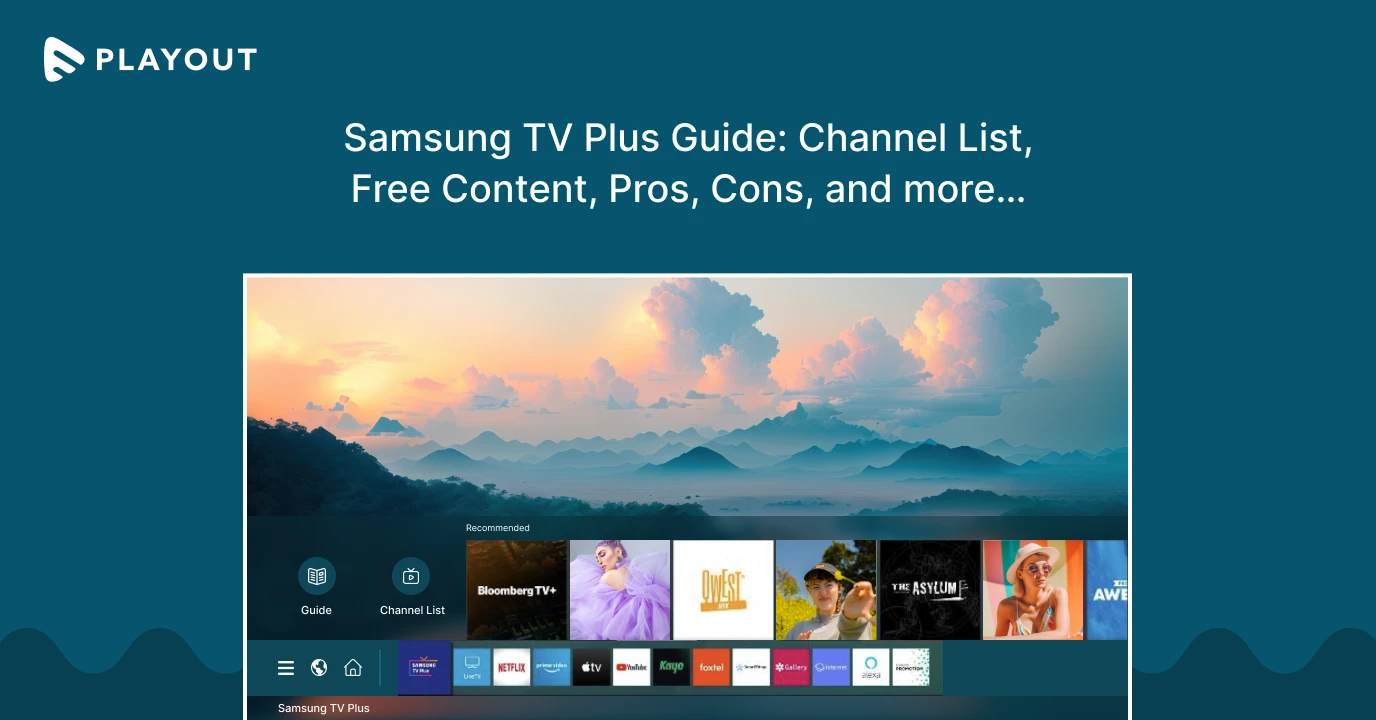

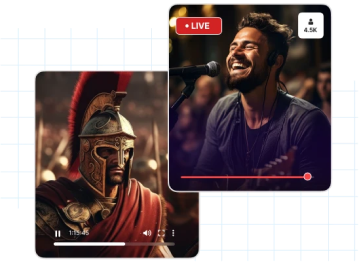


Add your comment